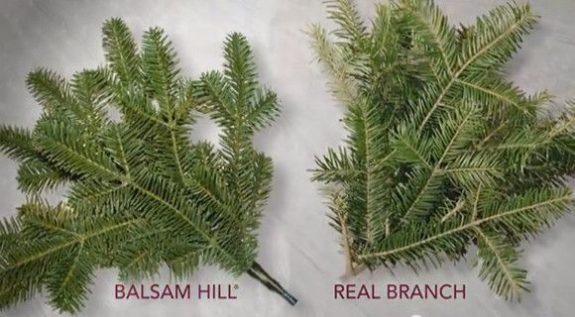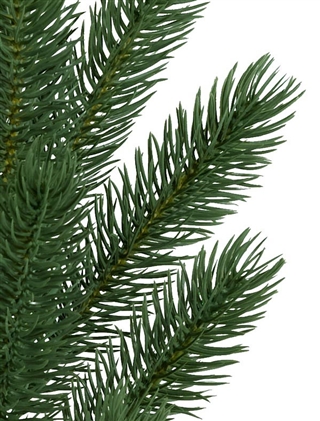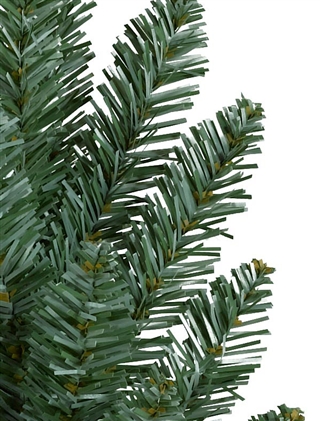
When shopping for a high quality artificial Christmas tree, you will probably encounter trees made out of a few different materials. The two most popular are the industry standard of PVC (which stands for Polyvinyl Chloride) and the newer option of Polyethylene (sometimes referred to as PE). While they may seem similar from afar, the material that an artificial tree is made of will have distinct effects on both its realism and durability. Here are some things you should know when comparing PVC vs Polyethylene Christmas trees for your needs.
PVC Christmas Trees
When artificial Christmas trees were first introduced, nearly all of them featured needles made of PVC. This material is a type of vinyl that is hard-pressed into thin paper-like pieces, then cut into fine, rectangular strips to emulate the appearance of pine needles. The strands are then twisted between two strings of wire to outline the tree branches.
PVC needles are often flat and look unrealistic but trees that feature these are often more affordable, so they are a good option if price is a major concern. Because PVC is a mainstay of traditional artificial trees, many people also prefer this style because of its nostalgic associations with childhood Christmases.
Polyethylene Christmas Trees

Some time after PCV Christmas trees came on the scene, polyethylene trees were also introduced to the market. Polyethylene is a type of plastic, and unlike PVC, PE can be injected into molds. Using actual tree branches from a variety of conifers, elaborate patterns can be cast and infused with PE, allowing for the creation of molded polymer needles that have the thickness and mass of a real tree branch. The shape and overall appearance of the resulting product results in a much more realistic looking artificial Christmas tree.
Because each branch and its needles are cast as a single piece, Polyethylene Christmas trees are much more durable than PVC options. However, the solid PE branches that give them their appearance and durability also use more materials, so expect Polyethylene trees to cost a bit more.
When deciding whether to select a PVC, Polyethylene, or mixed material Christmas tree for your home, be sure to consider the style, price point, and durability of each of these options. It should also be noted that some artificial Christmas trees feature a combination of PE and PVC to provide both a thick, full silhouette and a more realistic appearance at a slightly lower price point. These can be a great compromise between the two materials if you can’t choose between PVC vs Polyethylene Christmas trees.
To find the perfect Christmas tree for your home, shop Balsam Hill’s selection of PVC Trees, Polyethylene Trees, and mixed material trees.







